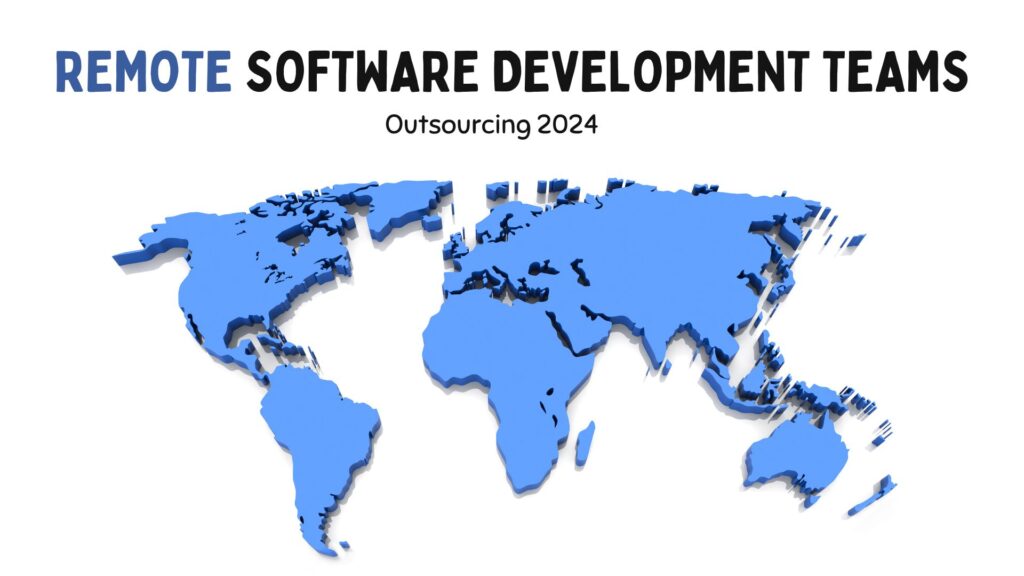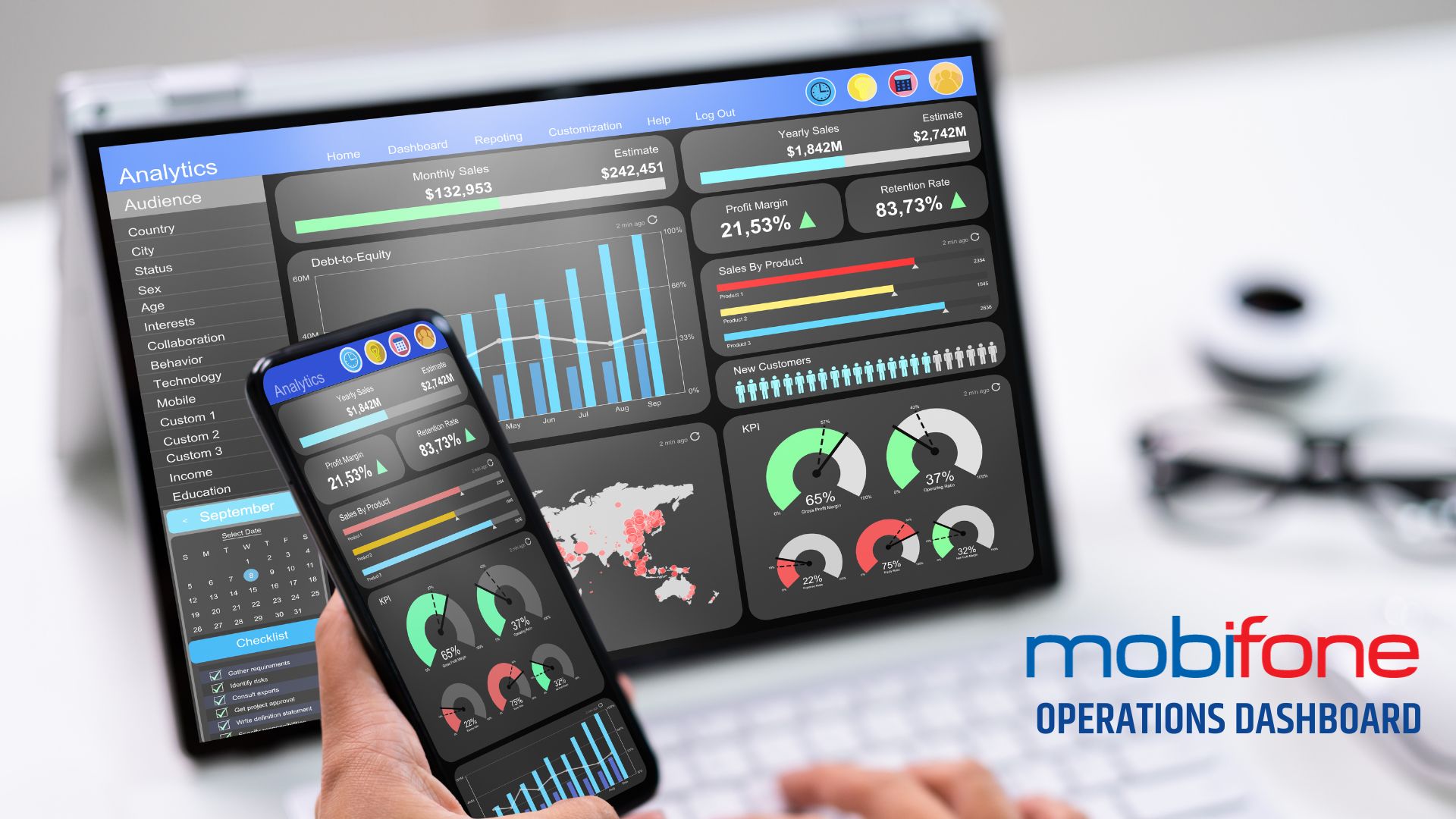In today’s fast-paced digital world, businesses rely heavily on software development across various sectors. As a result, there’s a growing demand for skilled professionals in this field. To address this need, many companies explore the option of hiring software developers from overseas.
Countries like those in Asia and Eastern Europe have established thriving software outsourcing markets, offering a vast pool of talent with diverse skills. Outsourcing software development can be a viable solution, especially when local expertise is scarce or when a company seeks to expand its reach by setting up a research and development center with an overseas team.
However, building a cohesive and effective team abroad poses significant challenges. Even forming an internal development team can be tough, with issues ranging from personal conflicts to the time required for team cohesion. Managing a team across borders adds further complexity due to cultural differences, time zone variations, limited face-to-face interaction, and differing levels of personal engagement.
Successfully building and managing a software development team abroad demands a well-thought-out strategy. This involves setting clear objectives, fostering team unity, and maintaining productivity. In this article, we’ll provide comprehensive guidance on navigating this process, covering everything from goal setting to ensuring team cohesion and efficiency.
1. Establish Clear Goals for the Team
Uncertainty about roles and objectives can hinder team performance, especially in scenarios where direct communication with managers is limited, such as when working with an external software outsourcing team. When cooperating with an outside software outsourcing unit, this problem becomes even more serious.
Therefore, it’s crucial to define clear goals and milestones. Businesses should precisely outline what they expect the overseas development team to accomplish, setting specific timelines and targets. It’s essential for all team members, including the outsourcing unit, to have a thorough understanding of these objectives and work in alignment towards achieving them.
An effective approach for setting goals is the SMART method.
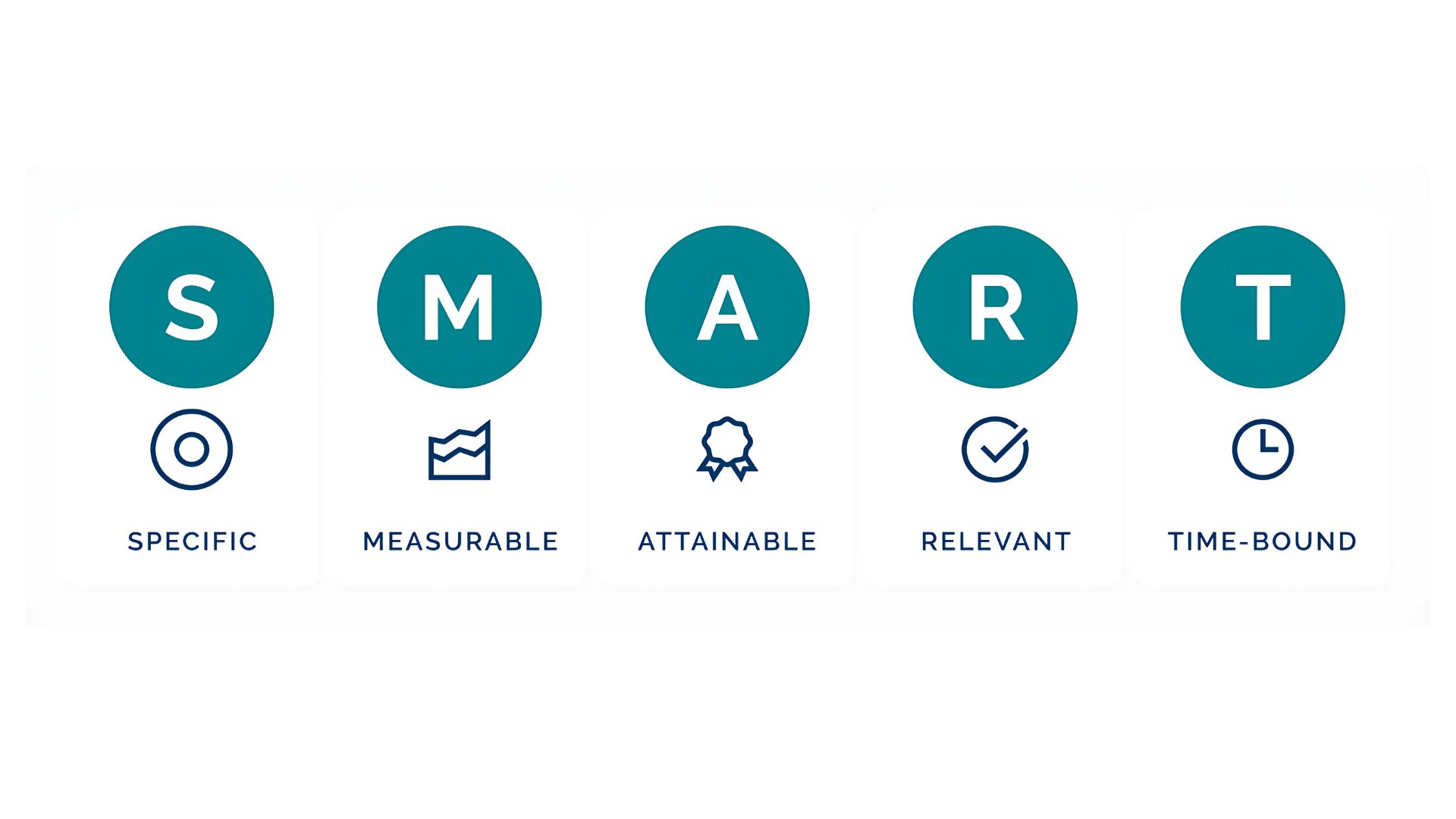
- Specific: Goals are clearly defined, avoiding ambiguity.
- Measurable: Clear indicators and criteria are established to assess progress.
- Achievable: Goals are realistic and within the capabilities of the team.
- Relevant: Goals are aligned with the business strategy and objectives.
- Time-bound: Timelines for goal completion are clearly outlined.
Implementing the SMART framework helps businesses articulate requirements and objectives when collaborating with outsourcing units. This not only improves team performance but also fosters stronger collaborative relationships, ensuring projects are executed according to plan.
Furthermore, it’s essential for businesses to ensure that the overseas development team comprehensively understands the company’s vision, mission, and overarching goals. Shared understanding and alignment with these principles are vital to steer the entire business in the desired direction.
2. Define the Project Scope and Monitor Progress
When collaborating with a software outsourcing team, it’s essential to articulate project objectives with utmost clarity. This ensures that products and features align closely with customer needs and expectations.
Setting a precise project scope enables businesses to plan software development phases more effectively. This entails clearly outlining the products and features to be developed, along with specific requirements. Additionally, scheduling key delivery milestones, including interim inspections and review points, facilitates clear understanding of progress expectations by all involved parties. This helps the processing team clearly understand the progress that needs to be achieved.
Moreover, defining the project scope assists in aligning goals with expectations. By establishing specific, measurable objectives using the SMART criteria, businesses ensure that products and features are developed according to customer specifications.
Clear delineation of tasks and features enables the outsourcing team to proactively anticipate and address deployment risks. This proactive approach is particularly crucial in external collaborations where communication and collaboration may not be as direct as internal processes.
3. Foster Regular Communication
Establishing a robust communication framework is crucial for successful collaboration. This includes defining clear rules, schedules, and leveraging effective communication tools.
Regular communication not only resolves role, responsibility, and geographical barriers but also enhances coordination between domestic and foreign team members, thereby ensuring project success. It’s imperative to integrate effective communication into the organizational culture. This ensures that communication becomes the cornerstone of collaboration between the business and the outsourcing unit.
To facilitate effective communication with software outsourcing units abroad, businesses should:
- Determine specifically the roles and responsibilities of leaders in both the enterprise and the processing unit. Avoid any ambiguity or conflict on leadership issues between the two sides.
- Clearly define the tasks and results to be achieved for each member, including internal and outsourcing staff. Make sure each person clearly understands their role and responsibilities.
- Establish a single set of rules and communication protocols that apply to all members. Ensure consistency and efficiency in the information exchange process.
- Schedule regular meetings between the internal and outsourcing teams to provide updates on progress and address any issues.
- Organize effective communication across time zone barriers. Overcome time zone barriers by organizing effective communication using tools like video calls and group chats. Schedule meetings accommodating the time zones of both parties.

4. Offer Prompt Information and Feedback
Timely feedback ensures that requests and information from the outsourcing team are promptly acknowledged and addressed by the business, preventing delays or overlooked queries.
In remote collaborations, delayed feedback can lead to misunderstandings, confusion, and project bottlenecks. The outsourcing team may not clearly understand the business’s requirements or not know how to perform the tasks. This will slow down progress and affect product quality.
Conversely, proactive provision of immediate feedback fosters a sense of being heard and understood within the outsourcing team. This clarity enables them to swiftly address issues, avoiding wasted time and effort. Additionally, it cultivates trust and positive rapport between both parties.
Immediate information and feedback are pivotal for effective collaboration between businesses and software outsourcing teams. By swiftly resolving issues and fostering positive interaction, this practice enhances product quality and project advancement.
5. Utilize Time Zone Overlap Effectively
In collaborations with overseas software outsourcing units, optimizing the period of overlapping work hours, known as Time Zone Overlap, is crucial for efficient communication and project advancement.
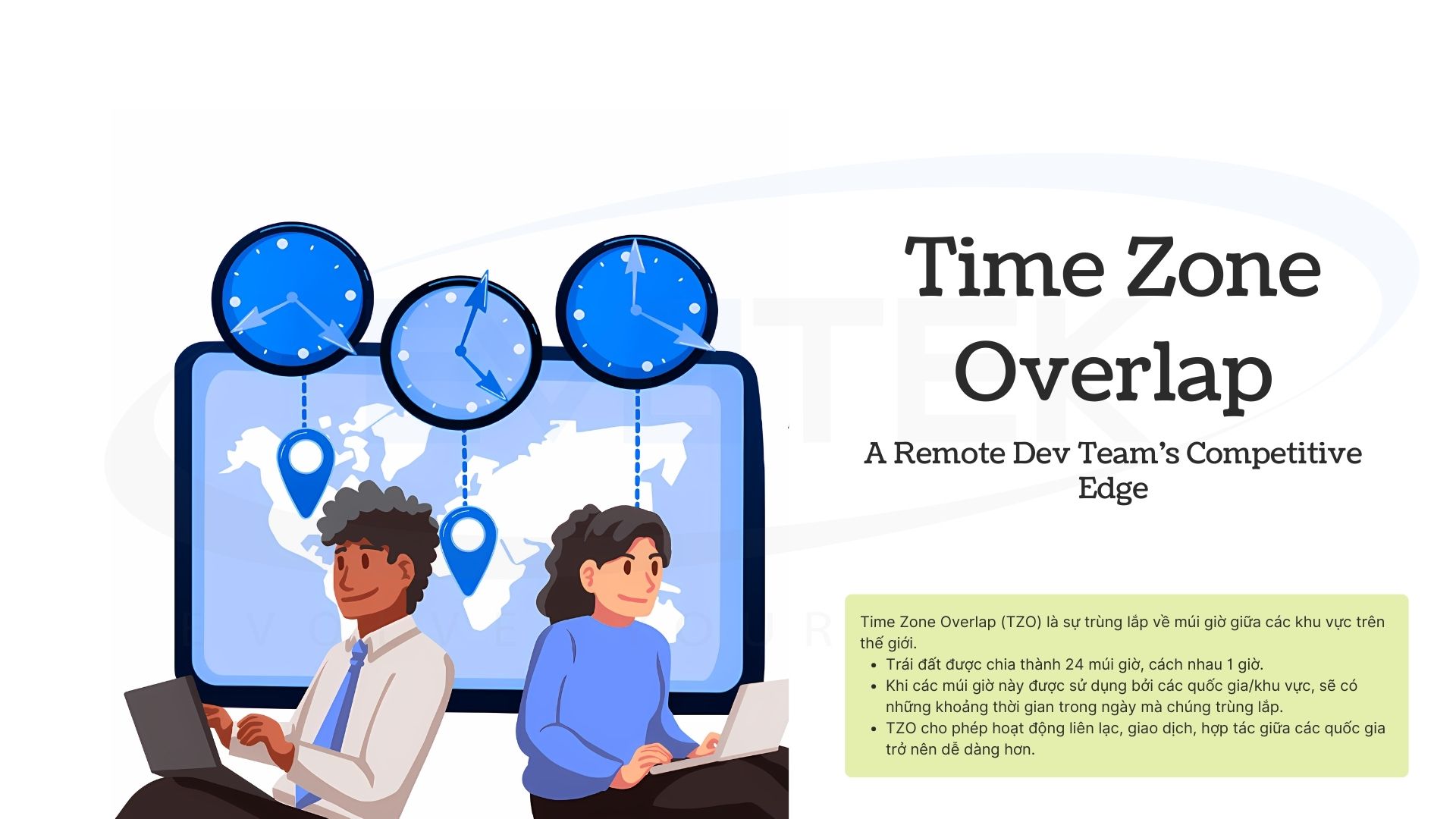
Normally, countries with different time zones will have a time difference of about 2-3 hours. This is the “golden window” for businesses and outsourcing teams to focus on organizing virtual meetings and exchanging updated information.
During these meetings, businesses can:
- Get updates on what the outsourcing team has done in the last 8-9 hours. This helps businesses grasp the progress and results of the project.
- Set priorities and set specific tasks for the next workday. Through this, the outsourcing team will better understand the work plan and direction.
- Timely resolve problems, questions or new ideas from the outsourcing team. Providing immediate feedback helps eliminate delayed decisions.
By scheduling virtual meetings during Time Zone Overlap, businesses and outsourcing teams can maintain regular interaction and information exchange. This fosters a collaborative work environment, driving progress towards shared project objectives.
6. Continuous Work Progress Updates
Maintaining a steady flow of updates on work progress is vital, particularly when collaborating with a remote software development team located far away. To maximize efficiency in this regard, businesses should adopt flexible project management methodologies such as Scrum, Kanban, or Agile.
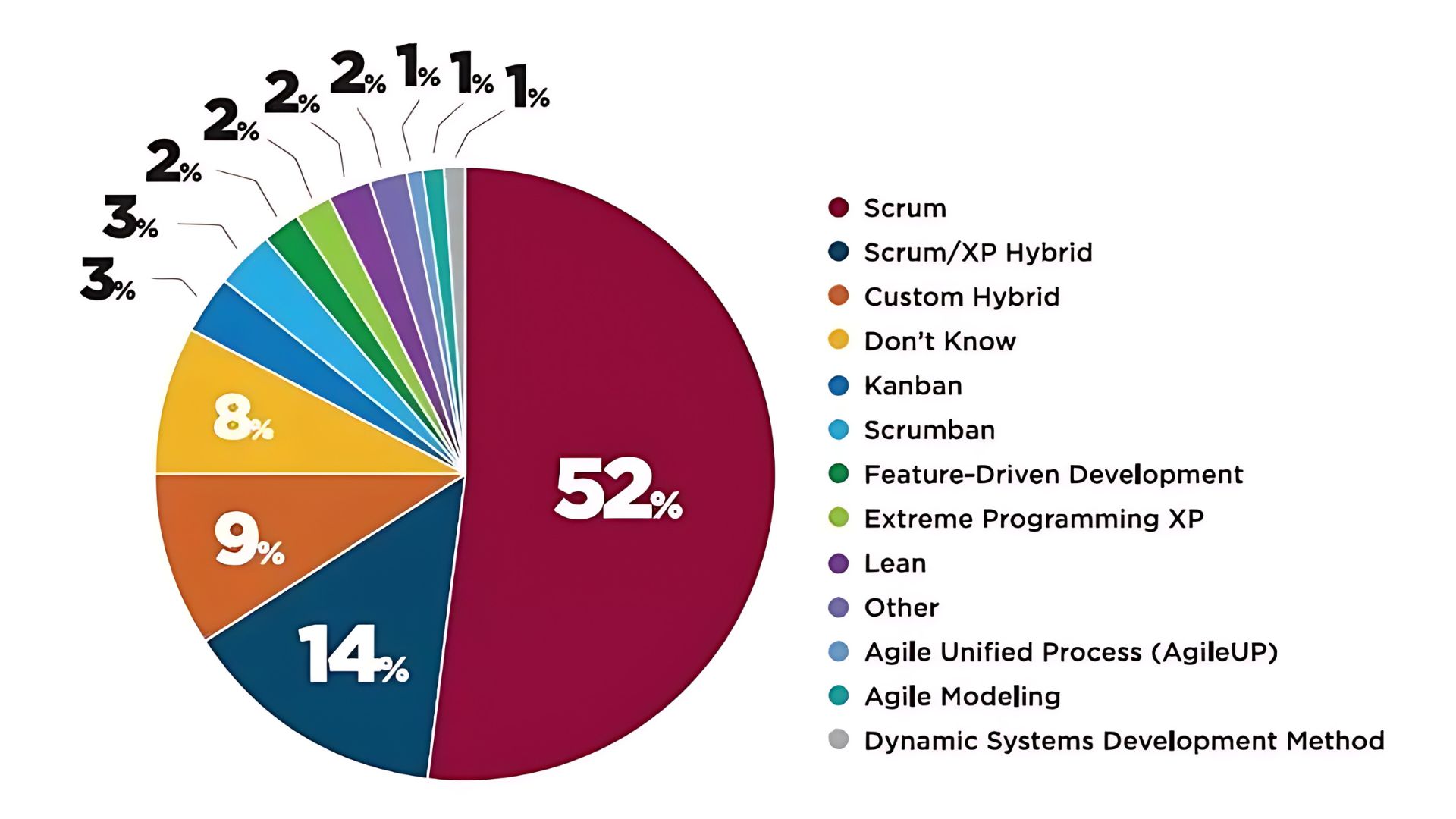
These project management approaches offer several advantages when working with remote software outsourcing units:
Regular Updates
Models like Scrum necessitate frequent progress update meetings, held daily or weekly, ensuring that both the business and the outsourcing team remain informed about the project’s status.
Prompt Responsiveness
Agile management methodologies promote continuous listening and responsiveness to customer feedback and requests. This allows the outsourcing team to swiftly adapt direction and products to meet evolving needs.
Self-Management and Flexibility
Many outsourcing units boast dedicated teams capable of self-management and independent work. This reduces the need for excessive monitoring and intervention by the business.
Iterative Development
Agile frameworks like Scrum advocate for a short-cycle development approach, with regular deliveries, facilitating rapid feedback and product improvement for both businesses and outsourcing teams.
By embracing flexible project management models, businesses can streamline management processes and enhance coordination with remote outsourcing teams. Regular update meetings, self-management practices, and prompt feedback mechanisms help bridge geographical gaps effectively.
It’s crucial for businesses to select the most suitable model based on project characteristics and management requirements. Moreover, partnering with professional outsourcing providers enables businesses to fully leverage the benefits of these adaptable management methodologies.
7. Milestone-Based Payment System
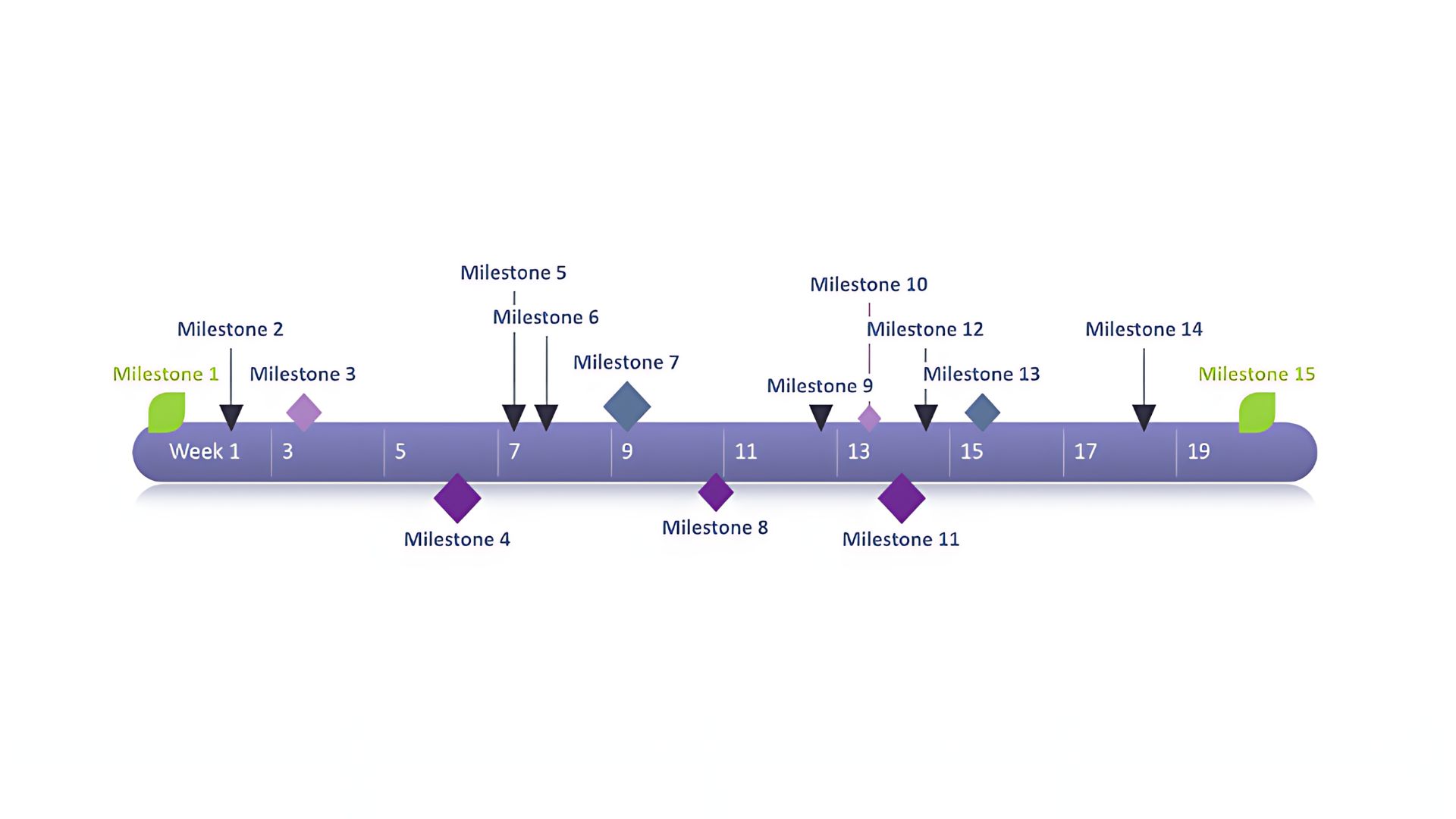
Linking payments to project milestones is a highly effective method for project management, ensuring essential features aren’t overlooked. Here are key considerations for implementing this strategy:
Identify Important Milestones
Pinpoint crucial stages in the project, such as completing core functionalities, testing, and product deployment. Ensure these milestones are detailed and measurable to track progress effectively.
Develop Acceptance Criteria
Define clear requirements and criteria for each milestone to be considered complete. Criteria may encompass functionality, features, quality, and performance. Establishing these criteria ensures all stakeholders share a common understanding of project expectations.
Associate Payments with Milestones
Break the project into smaller phases and tie payments to the completion of milestones. This incentivizes the outsourcing team to adhere to the schedule and allows project owners to maintain control over progress and mitigate risks effectively. In addition, it also helps project owners better control progress and prevent risks.
Manage and Track Progress
Regularly monitor and assess progress towards milestone completion. Promptly identify any delays or issues and provide timely resolutions to keep the project on track.
Implementing this approach enables the project to be broken down into manageable tasks, rather than presenting the outsourcing agency with a large workload all at once. This minimizes the risk of overlooking features and ensures timely, high-quality project completion.
Software Outsourcing Services in Vietnam
Vietnam ranks among the top seven countries globally for offshore business services by 2023, according to Statista. Despite challenges posed by the COVID-19 pandemic, Vietnam remains committed to becoming a leading destination for quality software outsourcing services. Consequently, an increasing number of foreign businesses are opting for Vietnamese companies as their software outsourcing partners.
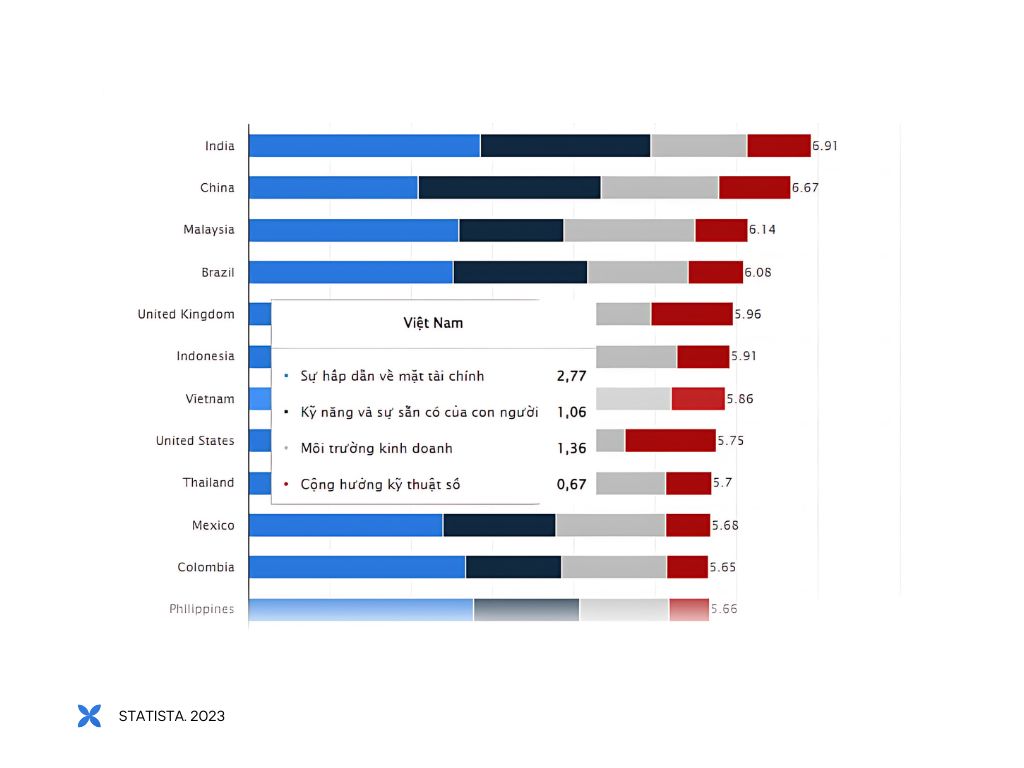
Below are some advantages when hiring a software outsourcing unit in Vietnam.
Cost Savings
Vietnam, situated in the Asia-Pacific region, enjoys proximity to major markets like the US, Japan, and Australia, resulting in reduced time and costs associated with communication and transportation.
This geographical advantage also facilitates efficient project management and progress monitoring. Moreover, personnel salary costs in Vietnam are notably reasonable, significantly lower than those in developed countries while ensuring comparable labor quality.
Abundance of Highly Qualified Developers
Vietnam boasts a robust pool of IT talent, comprising highly skilled and experienced engineers and programmers. The country’s leading universities produce thousands of information technology graduates annually, catering to the needs of software outsourcing firms.
Leveraging this talent pool, software outsourcing units in Vietnam deliver professional services that meet customer expectations.
Government Support
The Vietnamese government has implemented various policies to attract foreign investment, including initiatives such as the National Digital Transformation Program. This program targets businesses seeking to enhance production, operational efficiency, and competitiveness through digital transformation.
Such supportive policies create an enabling environment for businesses operating in Vietnam. Evotek: Your Trusted Software Development Partner
With over seven years of experience in the IT industry, Evotek stands out as a leading software development company in Vietnam, offering top-notch software development services. Our team of skilled engineers, proficient in English and other languages like Japanese, Korean, and Russian, is dedicated to meeting customer needs.
At Evotek, we are committed to delivering superior software services across various domains, including:
- Software Development
- Mobile Application Development
- Develop the Web
- UI/UX design
- Business Process Management
- Quality Assurance & Testing
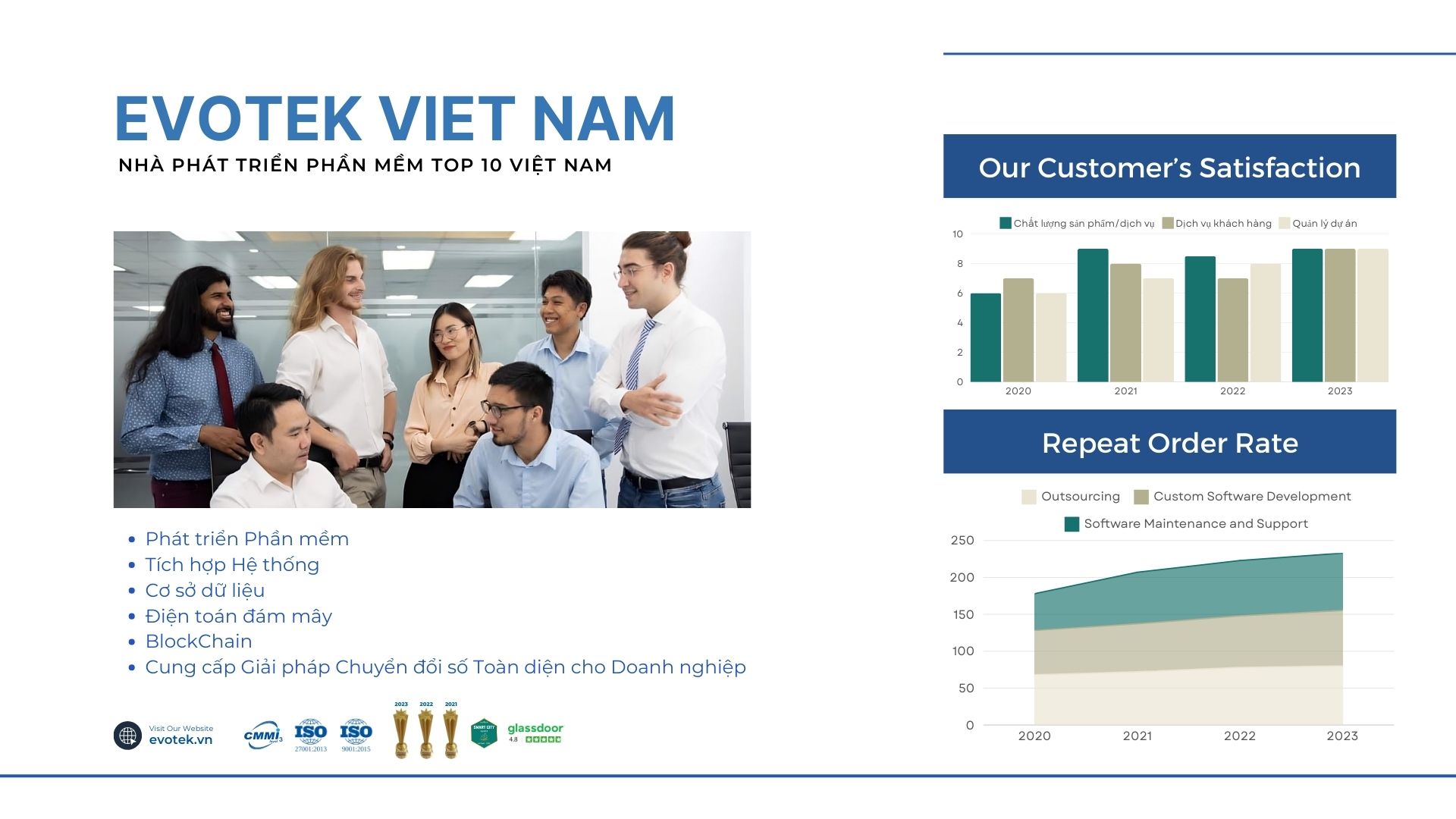
Top 12 frequently asked questions from our clients

 日本語
日本語 한국어
한국어 Tiếng Việt
Tiếng Việt 简体中文
简体中文